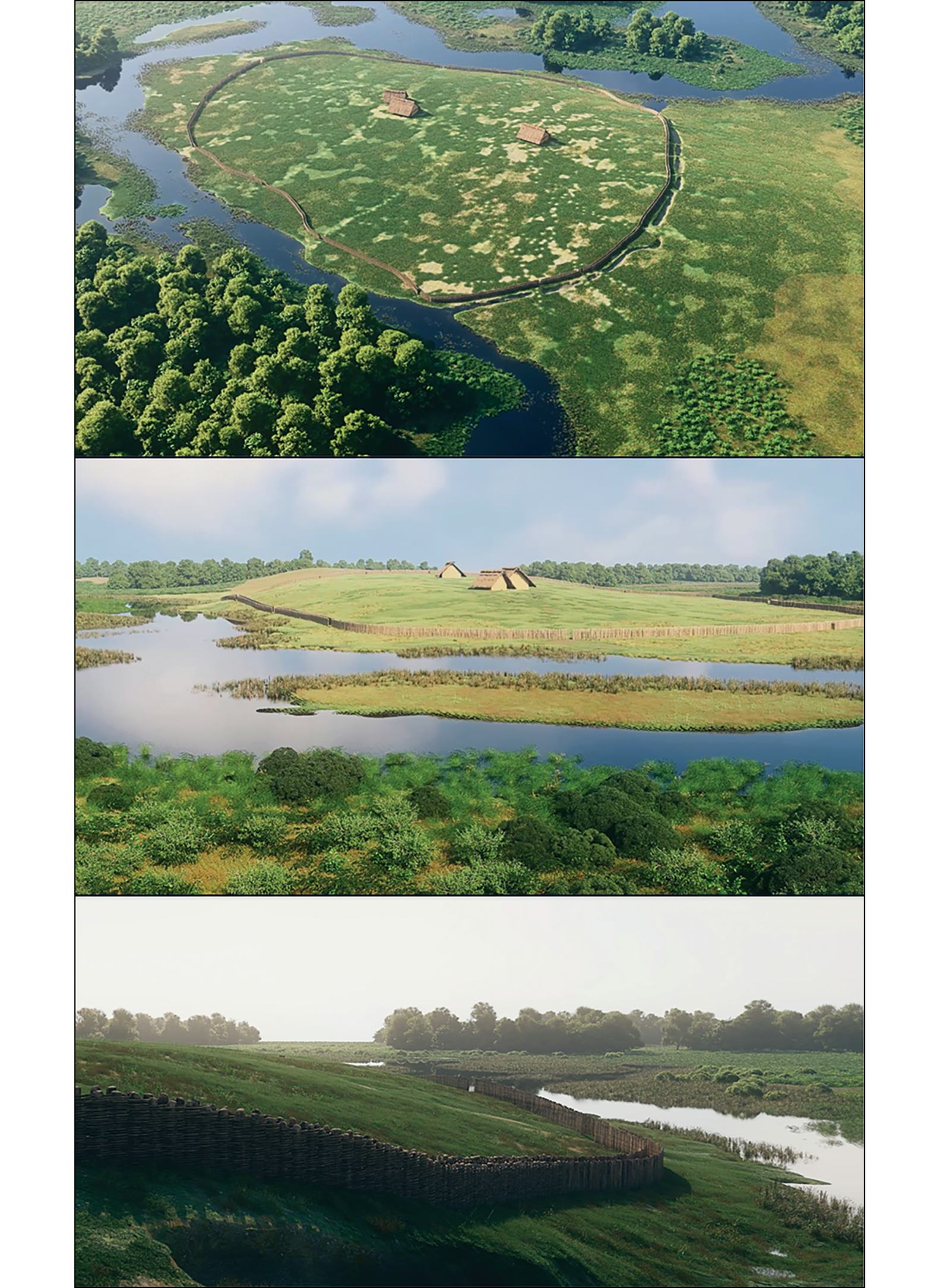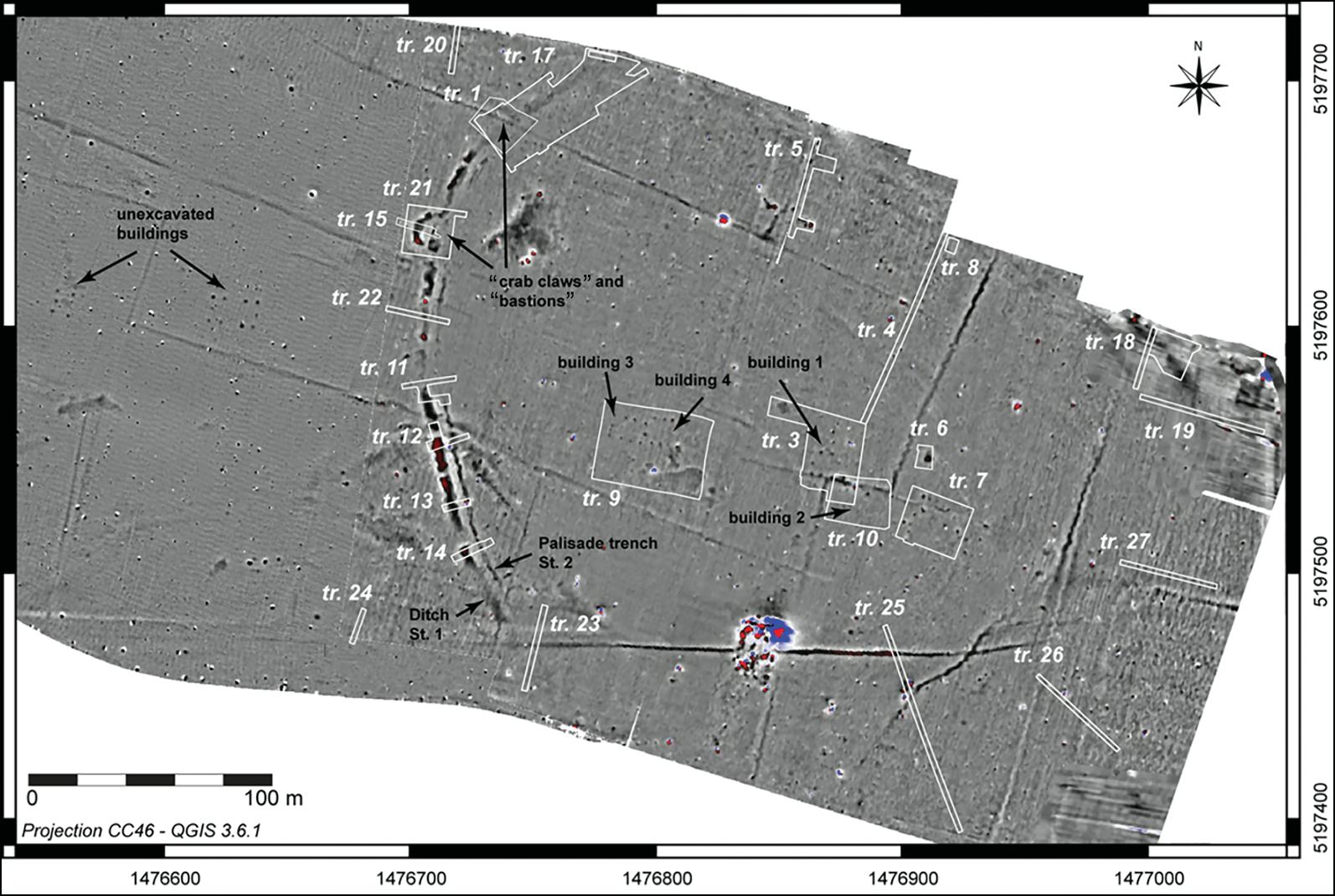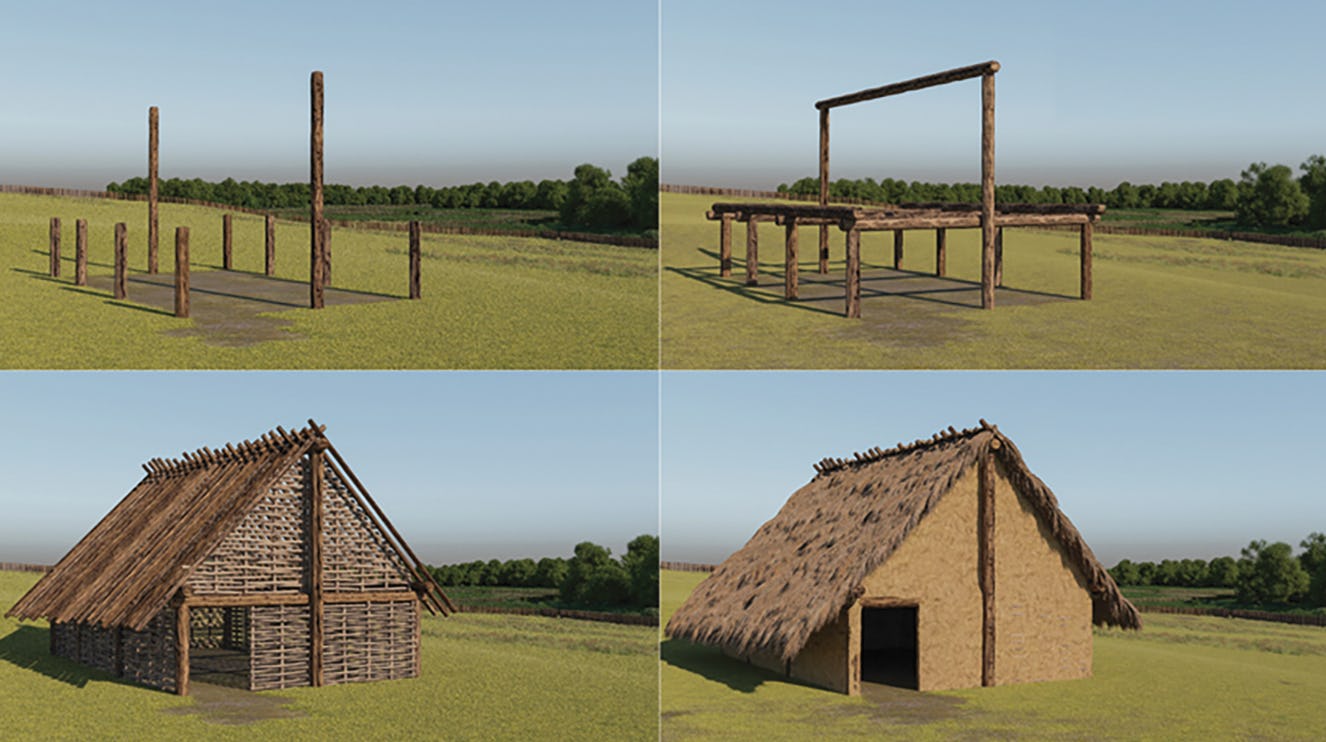
Whether its Stonehenge, the pyramids, or a myriad of other ancient places, we’ve long been fascinated by impressive monuments from the distant past. But more often than not, the stories of the people who built these ancient marvels are lost to the mists of time.
It’s rare to get a glimpse into the lives of the laborers whose handiwork still towers over landscapes today. But a newly-described site in France reveals the likely home base of some of Europe’s first stone monument builders, dating back to the Middle Neolithic period (4700-3700 BC).
Described this week in the journal Antiquity, researchers reconstructed a 6500-year-old settlement where a group of workers may have lived just a few kilometers from their job site. They pieced together the details of life at the settlement, including how it met a destructive fate.
Life at Le Peu
It started with a mysterious group of trenches. In 2011, an aerial survey of a stretch of land in west-central France revealed several expansive trenches that piqued the interest of archaeologists.
In the subsequent years, researchers excavated and analyzed portions of the site to piece together its past. They found that one of the trenches formerly held wooden stakes that would have formed a palisade fence. Two entrances would have opened up to a broad patch of land atop a small hill where at least four buildings stood.

The site is called Le Peu, and was likely the home of some of the first Europeans to ever build monuments known as megaliths.
“We know [of] a lot of megaliths,” CNRS archaeologist Vincent Ard, who lead the study, tells Inverse. “[They are] very famous and so many people are interested in [them], but we don’t know where the builders lived.”
If you stand on the hill at Le Peu today, there’s actually a group of megaliths visible in the distance. Known as the Tusson megalithic cemetery, it houses five large, Neolithic mounds that encase the bodies of the dead.
Its positioning near Le Peu is unlikely to be a coincidence. The discovery of the new site “is important because we found, probably, one of the settlements of the builders of this necropolis of Tusson,” Ard says.
A stone’s throw away
Radiocarbon dating confirms that people lived at Le Peu during the same time that the Tusson cemetery was likely built. And the sites are only 2.5 kilometers (1.5 miles) apart, increasing the likelihood that the people who lived at Le Peu could have actually built the burial mounds themselves.

During the middle Neolithic period, “most of the sites [were] generally placed on the top of hills or promontories because they [wanted] to be visible far from the site,” Ard explains. “So it’s a choice.”
However, it isn’t clear exactly why Neolithic peoples intentionally built megaliths in tall places. But since many megaliths in France are also gravesites, it likely had something to do with the wealth or status of those buried there, Ard says.
Despite the close proximity of the builder’s living quarters, it’s currently unclear how they would have commuted to and from their worksite and how many builders lived at Le Peu. Many questions remain about the building process, in part due to the fact that the Tusson cemetery remains unexcavated.
But from what researchers have found in the remains of architecture at Le Peu, life in Middle Neolithic France may have not always been peaceful.
Turmoil at home?
All that remains of the four buildings at Le Peu are holes in the ground where support posts once stood. The researchers were able to map out their dimensions and find traces of materials that each building was made of, but there are few details about their interior layout.

Made primarily of timber, each building shows signs of combustion, indicating that the buildings were burned down. The researchers estimate that this happened around 4400 BC.
Whether it was arson from an outside enemy, or a purposeful destruction of the site by its inhabitants is not clear. But the remains of the palisade fence, bastions, and a narrow crab-claw entrance hint that residents at Le Peu may have needed defensive architecture to protect themselves from enemies.
“It's evidence of probable conflict, but [it’s] just evidence by the observation of the architecture,” Ard says. “We don't have any direct traces of conflict, but it's very, very probable.”
No punctured skulls or cut-up bones were unearthed from Le Peu. In fact, of the few human remains found there, none showed signs of damage from weapons.
Violence in the Neolithic period was not uncommon, though. Other studies have found evidence of massacres and bloody conflicts at other sites in Europe, typically through the damaged skeletons of the victims.
What we still don’t know
Though Le Peu gives an unprecedented look into the lives of Europe’s early monument builders, it leaves archaeologists with even more questions about their existence. And some of those answers may soon come to light, thanks to other discoveries mentioned in the Antiquity report.
Researchers have already located three more enclosures like the one at Le Peu within a two km (1.2 mile) radius of the site. Initial analyses revealed that they were occupied after Le Peu was abandoned.
Perhaps they could have been a refuge — a new home for the fleeing builders after a fiery conflict went south. But only time will tell what happened to the people at Le Peu, and if the Tusson cemetery was truly their handiwork.







